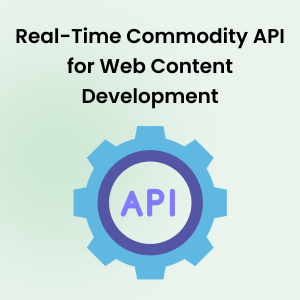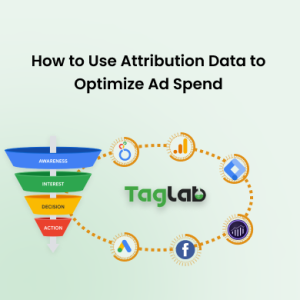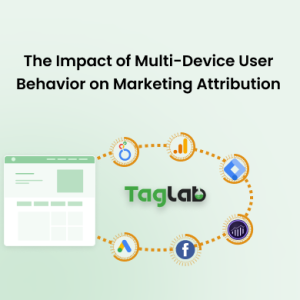Your cart is currently empty!
Marketing Mix Model Lead Conversion Metric Definition
Posted by:
|
On:
|
Marketing Mix Model (MMM) Lead Conversion measures how effectively different marketing channels within a comprehensive marketing strategy convert leads into customers. This metric helps businesses understand the combined impact of various marketing channels on driving conversions and optimizing lead generation efforts.
Detailed Explanation
What is Marketing Mix Model Lead Conversion?
Marketing Mix Model (MMM) Lead Conversion refers to the percentage of leads that convert into paying customers, considering the effect of all marketing channels in the mix. By analyzing the interactions between different channels, MMM helps businesses identify which combinations of online and offline marketing efforts—such as digital ads, social media, TV, radio, and print—are most effective at converting leads. This allows businesses to optimize their overall lead generation and conversion strategies.
How it Works?
MMM Lead Conversion is calculated by analyzing historical marketing data to determine how each marketing channel contributes to lead conversions. The conversion rate is then determined by comparing the number of leads converted to the total number of leads generated:
Lead Conversion Rate = (Number of Leads Converted / Total Number of Leads Generated) x 100
This approach helps businesses optimize their marketing efforts by focusing on the channels and strategies that drive the highest lead conversion rates within their overall marketing mix.
Types of Marketing Mix Model Strategies for Lead Conversion
- Channel-Level Lead Conversion: Measures the lead conversion rate for individual channels within the marketing mix, such as social media, email marketing, or TV ads.
- Cross-Channel Synergy: Focuses on how different marketing channels work together to convert leads, evaluating the combined effect of multiple channels on lead conversion.
- Campaign-Level Lead Conversion: Assesses the effectiveness of integrated marketing campaigns that span multiple channels in converting leads into customers.
- Attribution Optimization: Identifies which channels and touchpoints in the marketing mix are most effective at driving lead conversions, allowing businesses to allocate resources efficiently.
Illustrative Scenarios
Examples
- An e-commerce company runs an integrated marketing campaign involving email marketing, digital ads, and social media. The MMM analysis reveals that email marketing has the highest lead conversion rate at 20%, while social media generates a 10% lead conversion rate, creating an overall conversion lift of 15% due to the combined effect of the channels.
- A financial services firm uses MMM to evaluate the lead conversion rates of its multi-channel marketing strategy, which includes TV ads, radio, and digital ads. The analysis shows that digital ads have a conversion rate of 25%, while TV ads convert leads at 15%, driving an overall lead conversion rate of 18% across channels.
Segmentation
MMM Lead Conversion can be segmented by channel, campaign, or audience demographics to provide deeper insights into which strategies work best for specific audience segments or under different conditions. For example, businesses may find that certain channels perform better at converting leads in younger audiences, while others perform better with older demographics.
Factors Influencing Marketing Mix Model Lead Conversion
- Channel Effectiveness: The ability of each marketing channel to drive lead conversions plays a significant role in determining the overall conversion rate of the marketing mix.
- Cross-Channel Synergy: MMM considers the synergy between channels, recognizing that combining channels often leads to higher lead conversion rates than relying on individual channels.
- Lead Quality: The quality of leads generated by the marketing mix can greatly influence conversion rates. High-quality leads are more likely to convert into customers.
- Audience Targeting: Properly targeting the right audience across multiple channels improves the likelihood of converting leads into paying customers.
- Data Quality: Accurate tracking of interactions and conversions across all channels is essential for reliable lead conversion analysis. Poor data quality can result in incorrect conversion estimates.
Strategies to Improve Marketing Mix Model Lead Conversion
- Optimize High-Converting Channels: Use MMM insights to identify which channels have the highest lead conversion rates and allocate more budget to these channels to increase overall conversions.
- Invest in Cross-Channel Synergy: Develop integrated campaigns that combine multiple channels to leverage synergy and improve lead conversion rates across touchpoints.
- Target High-Intent Leads: Focus on targeting leads who have shown strong intent to purchase, using remarketing ads, email follow-ups, or personalized offers to increase conversion likelihood.
- Leverage Data-Driven Decisions: Use data from MMM analysis to adjust targeting strategies, channel selection, and campaign elements to optimize lead conversion rates.
- Test and Refine Campaigns: Regularly test different aspects of your campaigns, such as creatives, messaging, and offers, to identify which strategies drive the highest lead conversion rates and optimize accordingly.
Benchmark Indicators
Understanding Marketing Mix Model Lead Conversion benchmarks by industry helps businesses evaluate the effectiveness of their multi-channel marketing strategies and set realistic goals for lead conversion rates:
- Technology Industry: MMM lead conversion rates typically range from 10% to 20%, with digital ads and email marketing driving the highest conversions when combined with offline marketing like TV ads.
- Healthcare Industry: MMM lead conversion rates often range from 8% to 15%, with lead conversions coming from a mix of digital campaigns, radio ads, and direct mail.
- Financial Services: Lead conversion rates generally fall between 12% and 25%, with cross-channel campaigns involving TV ads, email marketing, and digital ads working synergistically to drive conversions.
- E-commerce: MMM lead conversion rates range from 15% to 30%, driven by a combination of search ads, social media, and email marketing, with offline channels like TV providing additional lift.
- Education Sector: Lead conversion rates can vary from 10% to 18%, influenced by digital advertising, content marketing, and email campaigns aimed at generating enrollments.
- Real Estate: MMM lead conversion rates often range between 12% and 22%, with campaigns leveraging a mix of digital ads, social media, and traditional media like radio or TV ads.
Tools for Measuring Marketing Mix Model Lead Conversion
- Marketing Mix Modeling Platforms: Tools like Nielsen, Analytic Partners, and Neustar MarketShare help businesses analyze lead conversion across multiple marketing channels and identify which channels drive the highest conversions.
- Data Analytics Tools: Platforms like Google Analytics and Adobe Analytics track channel-level lead conversion metrics, providing data for integration into MMM analysis.
- Business Intelligence Tools: Platforms like Tableau and Looker Studio visualize conversion data from MMM, allowing businesses to make informed decisions about campaign optimization and resource allocation.
Common Pitfalls and Mistakes
- Relying on Incomplete Data: Inaccurate or incomplete data from one or more channels can distort conversion metrics, leading to incorrect conclusions about campaign performance and lead conversion rates.
- Ignoring Cross-Channel Synergy: Failing to account for the interaction between channels may result in underestimating the total lead conversions driven by the marketing mix.
- Overlooking Lead Quality: Not all leads are equal. Focusing on generating a high volume of leads without considering quality can lead to lower conversion rates and less efficient use of marketing resources.
- Neglecting Audience Differences: Treating all leads the same across channels can lead to missed opportunities. Segmenting lead conversion by audience demographics and behaviors is essential for understanding how different groups respond to various marketing efforts.
- Not Optimizing Campaigns: Sticking to a fixed media mix without regular testing and optimization may limit lead conversion potential and reduce overall campaign effectiveness.
Frequently Asked Questions
What is Marketing Mix Model Lead Conversion?
Marketing Mix Model (MMM) Lead Conversion measures the percentage of leads that convert into paying customers by analyzing the effectiveness of multiple marketing channels working together within a marketing mix.
Why is Marketing Mix Model Lead Conversion important?
MMM Lead Conversion is important because it helps businesses understand how various marketing channels contribute to converting leads into customers, allowing for better resource allocation and optimization of lead generation strategies.
How can I improve Marketing Mix Model Lead Conversion?
To improve MMM Lead Conversion, businesses should optimize high-converting channels, invest in cross-channel synergy, target high-intent leads, use data-driven decisions, and regularly test and refine campaigns.
What factors influence Marketing Mix Model Lead Conversion?
Factors influencing MMM Lead Conversion include channel effectiveness, cross-channel synergy, lead quality, audience targeting, and data quality.
What are good benchmarks for Marketing Mix Model Lead Conversion?
Good benchmarks for MMM Lead Conversion vary by industry, with rates above 20% considered excellent, while rates below 8% indicate a need for improvement.



